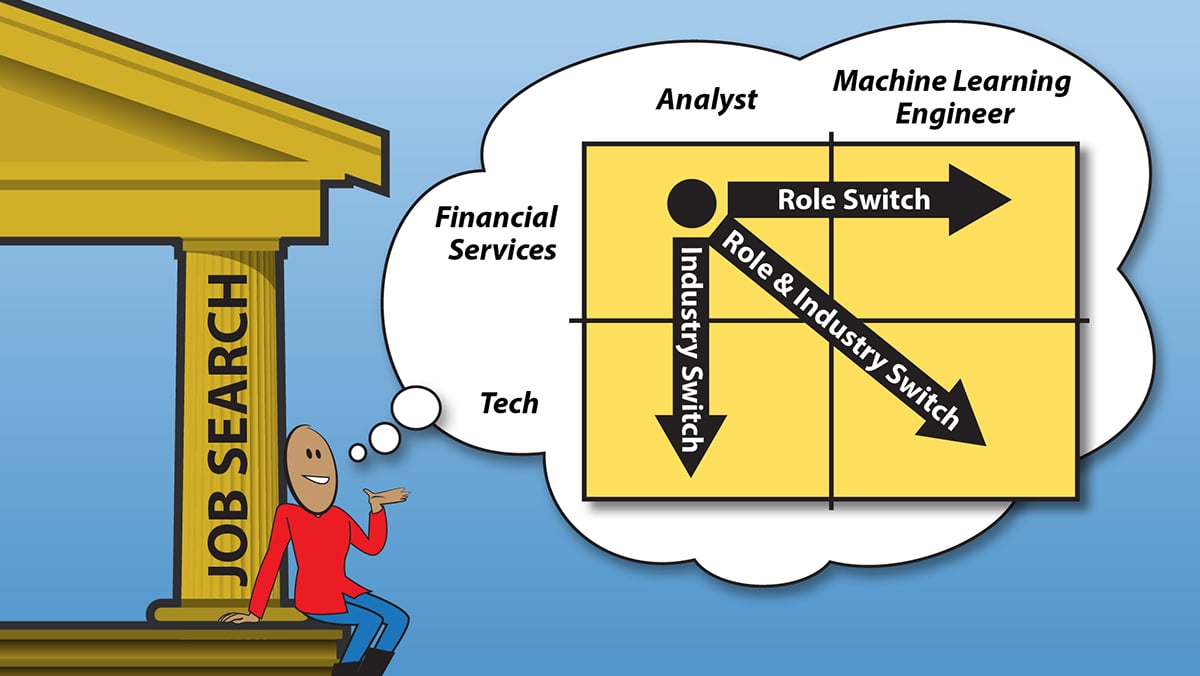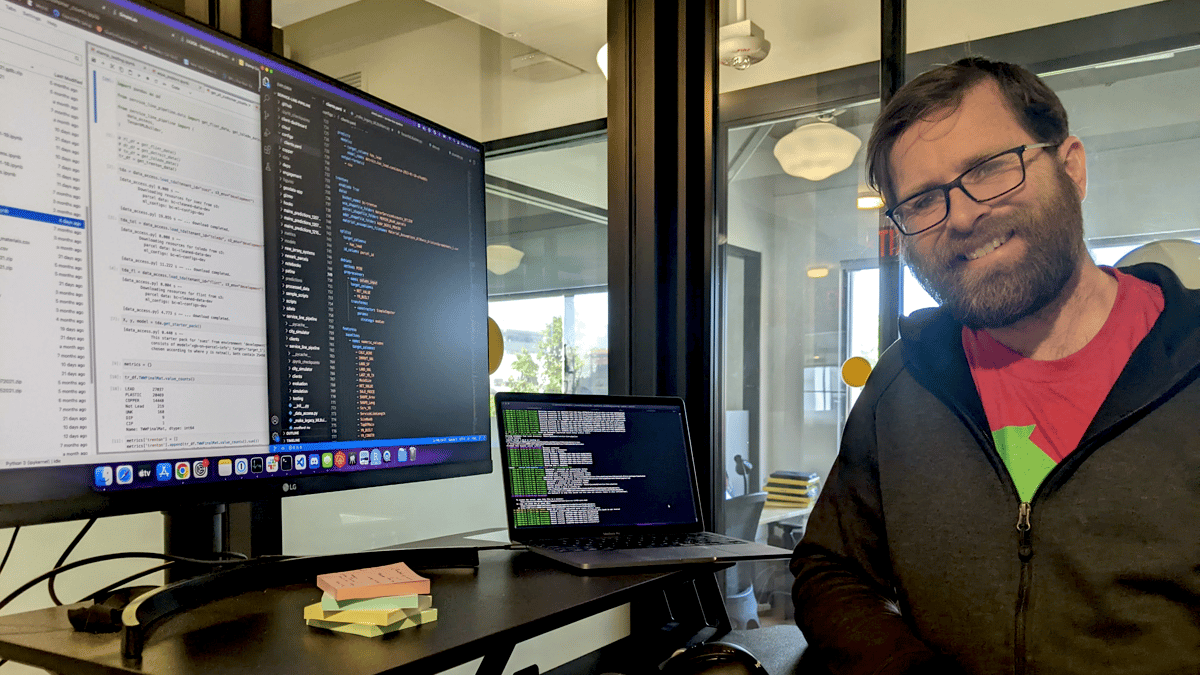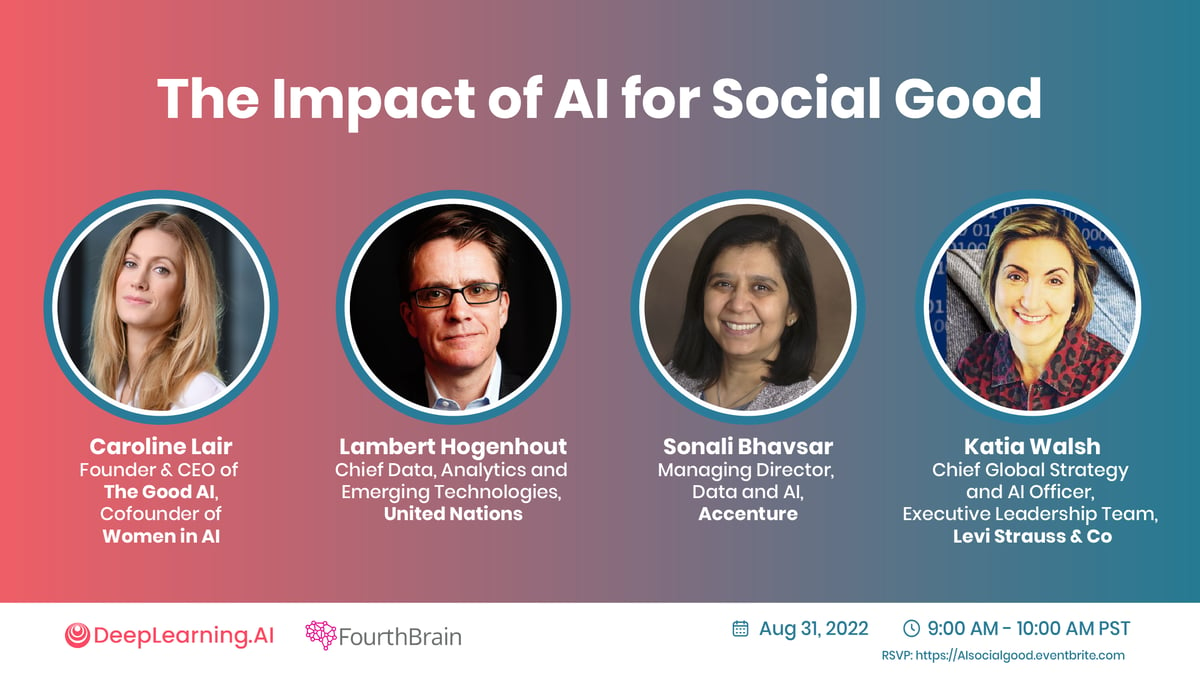Dear friends,
I’ve written about how to build a career in AI and focused on tips for learning technical skills, choosing projects, and sequencing projects over a career. This time, I’d like to talk about searching for a job.
A product manager at a tech startup who becomes a data scientist at the same company (or a different one) has switched roles. A marketer at a manufacturing firm who becomes a marketer in a tech company has switched industries. An analyst in a financial services company who becomes a machine learning engineer in a tech company has switched both roles and industries.
If you’re considering a role switch, a startup can be an easier place to do it than a big company. While there are exceptions, startups usually don’t have enough people to do all the desired work. If you’re able to help with AI tasks — even if it’s not your official job — your work is likely to be appreciated. This lays the groundwork for a possible role switch without needing to leave the company. In contrast, in a big company, a rigid reward system is more likely to reward you for doing your job well (and your manager for supporting you in doing the job for which you were hired), but it’s not as likely to reward contributions outside your job’s scope.
DeepLearning.AI Exclusive
Working AI: Clean Water WarriorJared Webb was pursuing a PhD when a public-health crisis erupted. So he formed a company that uses AI to identify toxic water pipes. He spoke with us about solving real-world problems, switching from academia to business, and what he looks for when hiring AI talent. Read his story here
News
Bad Machine Learning Makes Bad ScienceMisuse of machine learning by scientific researchers is causing a spate of irreproducible results. What’s new: A recent workshop highlighted the impact of poorly designed models in medicine, security, software engineering, and other disciplines, Wired reported.
Behind the news: The workshop followed a recent meta-analysis by Princeton researchers that identified 329 scientific papers in which poorly implemented machine learning yielded questionable results. Why it matters: Experienced machine learning practitioners are well aware of the pitfalls detailed by the workshop, but researchers from other disciplines may not be. When they apply machine learning in a naive way, they can generate invalid results that inherit an aura of credibility owing to machine learning’s track record of success. Such results degrade science and impinge on the willingness of more skeptical scientists to trust the efficacy of learning algorithms. Enquiries like this one will be necessary at least until machine learning becomes far more widely practiced and understood. We’re thinking: Many AI practitioners are eager to contribute to meaningful projects. Partnering with scientists in other fields is a great way to gain experience developing effective models and educate experts in other domains about the uses and limitations of machine learning.
AI Hits Its StrideA smart leg covering is helping people with mobility issues to walk. What’s new: Neural Sleeve is a cloth-covered device that analyzes and corrects wearers’ errant leg movements. Developed by startup Cionic and product studio Fuseproject, the device is intended to help people with conditions that affect coordination of the legs, such as multiple sclerosis, cerebral palsy, spinal cord injury, and stroke.
Behind the news: AI-enabled wearable devices have a wide variety of applications in making the world more accessible to people who are injured or otherwise disabled.
Why it matters: Some 13.7 percent of American adults have a disability that severely impairs their ability to walk up and down stairs, according to the United States Centers for Disease Control and Prevention. Devices like Neural Sleeve may enable many of these people to move more freely and effectively.
A MESSAGE FROM DEEPLEARNING.AI
Are you ready to use AI for social good? Advances in AI offer opportunities to tackle important environmental, public health and socioeconomic issues. Learn how! Join us on August 31, 2022, at 9:00 a.m. Pacific Time for “The Impact of AI for Social Good.” RSVP
Deepfakes Against ProfanityDeepfake technology enabled a feature film to reach a broader audience. What’s new: Fall, a thriller about two friends who climb a 2,000-foot tower only to find themselves trapped at the top, originally included over 30 instances of a certain offensive word. The filmmakers deepfaked the picture to clean up the language, enabling the film to earn a rating that welcomes younger viewers, Variety reported.
Behind the news: Neural networks are increasingly common in the edit suite.
Why it matters: Fall’s distributor Lionsgate determined that the movie would make more money if it was aimed at a younger audience. However, reshooting the offending scenes might have taken months and cost millions of dollars. AI offered a relatively affordable solution.
Ensemble Models SimplifiedWhy build an ensemble of models when you can average their weights? What’s new: A model whose weights were the mean of an ensemble of fine-tuned models performed as well as the ensemble and better than its best-performing constituent. Mitchell Wortsman led colleagues at University of Washington, Tel Aviv University, Columbia University, Google, and Meta to build this so-called model soup. Key insight: When fine-tuning a given architecture, it’s common to try many combinations of hyperparameters, collect the resulting models into an ensemble, and combine their results by, say, voting or taking an average. However, the computation and memory requirements increase with each model in the ensemble. Averaging the fine-tuned weights might achieve similar performance without the need to run several models at inference. How it works: The authors investigated model soups based on 72 pre-trained CLIP models that were fine-tuned on ImageNet.
Results: The authors’ model achieved 81.03 percent accuracy on ImageNet, while an ensemble of the 72 fine-tuned models achieved 81.19 percent and the single best-performing model achieved 80.38 percent. Testing the ability to generalize to a number of shifted distributions of ImageNet, the authors’ model achieved 50.75 percent average accuracy, the ensemble 50.77 percent, and the best model 47.83 percent. Why it matters: When training models, it’s common to discard weaker models or build an ensemble. The model-soup method puts that effort into better performance without costing computation or memory at inference. We're thinking: Averaging weights across various numbers of training steps increased performance in prior work. It's good to find that this method extends to different training runs.
Work With Andrew Ng
Senior Controller: Woebot Health seeks a controller to help drive the development of people, processes, technology, compliance, and reporting and ensure that data is available for decision-making. The ideal candidate has 10-plus years of experience. MBA and CPA preferred. Apply here
Financial Analyst: Woebot Health is looking for an analyst to analyze data for the directors and C-suite to support strategic planning and other projects. The ideal candidate has seven-plus years of experience in market research, business analysis, and project management. Apply here
Tech Lead: Workhelix, an AI Fund portfolio company that provides data and tools for companies to manage human capital, seeks a tech lead to produce scalable software solutions for enterprise customers. You'll be part of a co-founding team responsible for the full software development life cycle. Apply here
Senior IT Manager: Woebot Health is looking for a senior IT manager to support onboarding, maintenance, and offboarding. The ideal candidate can work with engineering to ensure that technology needed to build, maintain, and run products is operational and integrated seamlessly into the overall Woebot Health IT infrastructure. Apply here
Product Marketing Manager: DeepLearning.AI seeks a product marketing manager who can bring its products to life across multiple channels and platforms including social, email, and the web. The ideal candidate is a creative self-starter who can work collaboratively and independently to execute new ideas and projects, thrives in a fast-paced environment, and has a passion for AI and/or education. Apply here
Data Engineer (Latin America): Factored seeks top data engineers with experience in data structures and algorithms, operating systems, computer networks, and object-oriented programming. Experience with Python and excellent English skills are required. Apply here
Subscribe and view previous issues here.
Thoughts, suggestions, feedback? Please send to thebatch@deeplearning.ai. Avoid our newsletter ending up in your spam folder by adding our email address to your contacts list.
|







